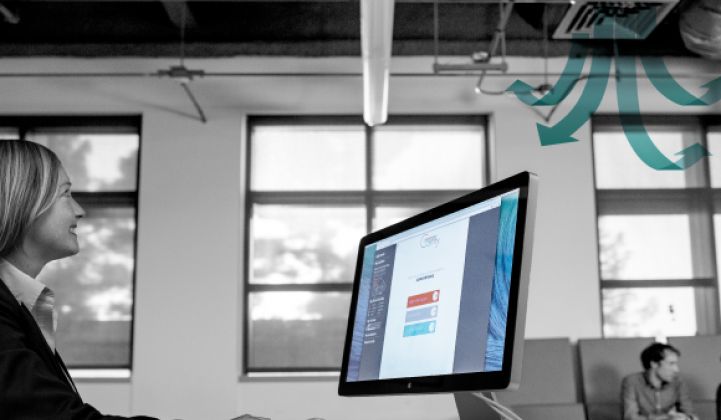If you're a pessimist, you likely see humans as fickle, needy and not easily pleased.
The German philosopher Arthur Schopenhauer called human happiness "always negative only, and never positive."
"It is not a gratification which comes to us originally and of itself, but it must always be the satisfaction of a wish...and so the satisfaction or gratification can never be more than a deliverance from a pain, from a want," he wrote in 1818, describing people as never fully satisfied.
If that's your opinion of human nature, don't ever go into behavior-based energy efficiency.
Andrew Krioukov, CEO of the California-based startup Building Robotics, is clearly not a pessimist.
"We are all about people," said Krioukov in an interview. "People are the missing factor in commercial efficiency. Instead of deploying tons of sensors, we just use people as our data points."
Building Robotics was started a year ago by Krioukov and his colleague Stephen Dawson-Haggerty when they were computer science researchers at UC Berkeley. Tasked with building software designed to solve an energy challenge, they built an open-source energy monitoring system for commercial buildings that is based primarily on inputs from occupants.
The startup's first product, called Comfy, is an app that lets people control temperature zones within an office building. If an occupant is too hot or too cold, she can make a change; if the requested change is big enough, someone else in the same temperature zone needs to make the same request within an hour in order for action to be taken. On the front end, it's a fairly straightforward temperature control system.
So what does this have to do with efficiency?
For the pessimist, it's easy to imagine a bunch of disagreeing control freaks armed with smartphones making changes to temperature on every whim. You don't have to read 19th-century German philosophy to understand that humans can be difficult. Anyone who's worked in an office building knows there are wild swings in thresholds for comfort, often among people sitting right next to one another.
Krioukov acknowledged that problem, but he said the back end of Building Robotics' system was designed to deal with those variations. That's where the efficiency comes in.
"The users are actually the sensors, and we can build a profile of the building based on their preferences. We can figure it out zone by zone and then optimize the building," said Krioukov.
Theoretically, as the back-end learning system gets better, people won't have to adjust the heating or cooling as much and the building won't experience dramatic variations in temperature. Considering that half of efficiency opportunities in commercial buildings are low-touch or no-touch, this optimization approach is designed to save money by avoiding equipment upgrades, and instead use some of the smartest things already there: humans.
"Occupant input via smartphones is a very powerful source of data," said Krioukov. "There's a lot we can do with that information."
So will a people-centric model work? It's hard to say, because Building Robotics isn't sharing any hard data about its pilots. Krioukov would only point to a UC Berkeley study showing that similar optimization techniques could cut energy consumption in commercial buildings by 30 percent, saying early pilots are consistent with those models. He also said that 85 percent of users are interacting with the app -- one-third of whom are logging on a few times a week.
The company did share results with investors, however. And it ended up pulling in a $1.14 million seed round from Google Ventures, Claremont Creek Ventures, Formation 8 and Red Swan Ventures. Building Robotics plans to use the money to build up its engineering capabilities and expand its back-end learning system.
The investors from those venture firms are clearly optimists about human nature like Krioukov. We'll be watching to see if they feel the same way after Building Robotics has a few more deployments under its belt.



